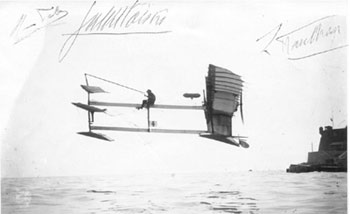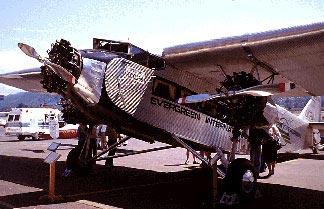Ornithopters (Flapping- wing)
The beauty and freedom of birds has always drawn our admiration and envy. The freedom to move in any direction over all obstacles is a capability that all of us would enjoy. early attempts to defy gravity involved the invention of machines, such as Ornithopters.
This type of flying machine utilizes the flapping of the wings in order to achieve flight. Needless, is to say that all attempts to fly using this type of machine failed.
Machine lighter-than-air
In the year between 1650 and 1900 , there was a second attempt at flying with a less sophisticated but more efficient generation of flying machines, the lighter-than-air craft. The idea of filling a closed container with a substance that normally rises through the atmosphere was known as early as the thirteen century. Over a five hundred year span, different substances came to be known as being lighter-than-air. The most common gas proposed was water vapor, helium and hydrogen. The first successful attempts at achiveing flight using his type of crafts were made by the Montgolfier brothers in France. Their most successful attempt was in 1783.
The most successful builder of this type of lighter-than-air craft was Count Ferdinand von Zeppelin (picture above) . In the early 1930's the German Graft Zeppelin machine was able to make a Trans-Atlantic flight to the United States. The large Hidenburg was equally successful until it was destroyed by fire while attempting a landing in 1937 at Lakehurst,New Jersey.
Orville and Wilbur Wright
In the early 1900s two American brothers, Orville and Wilbur Wright from Dayton, Ohio began to experiment with gliders. The gliders were built using data from Otto Lilienthal in Europe. Most of these flights turn out to be a failure. In 1901, they decided to gather their own wing data by conducting systematic experiment on different type of wing configurations. In 1902, Glider has wingtip to wingtip measurement of 32 ft. and wing width of 5 ft. This was the first aircraft with three-axis control. This mean that the aircraft could go up or down, left or right, and could also roll about its longitudinal axis. At Kitty Hawk, they perform over 800 flights, the early problem of aircraft were solved .
The Wright brothers, now confident about their ability to flight, decided to turn their attention to power. In 1903, after redesigning the airframe of their 1902 glider, the Kitty Hawk Flyer was born. In December 17 , 1903 , with this aircraft, Orville and Wilbur Wright demanstrated the flight of self powered aircraft.
Following the Wright Brothers success, the aeronautical activity took place basically everywhere in the world.
Bleriot XI Monoplane
The future potential of the airplane was realized when Louis Bleriot (France) flew his XI monoplane across the Einglish Channel in 1909. This was made Britain could no longer feel secure because England rely only on the royal navy.
Henri Fabre Seaplane:
The first Seaplane was built and flown by Henri Fabre (France) in 1910 at Martigues, France. The great pioneer of marine flying was Glen Curtiss of the United States. In 1911 he fitted floats to his pusher biplanes and flow it off the water.
First flight of a seaplane called a Hydravion was created by Frenchman Henri Fabre. Using a 50 horsepower Gnome rotary engine, Fabre flew 1650 feet on water (March 28, 1910).
Vikers Gunbus:
Until 1914 , As the war progressed, the manufacturers were pressed to equip airplanes with guns, bombs and torpedos. This Vicker Gunbus (England) had been accomplished by 1914.
F.X. Trimotor:
From the United States, Ford Trimotor is the world's first airline services were in 1910. With the advances in aircraft designed brought about by war, the enclosed cabin airplane became the standard for commercial airline travel by the early 1920's.
As the time went by, the speed of airplanes began to increase. From the famous 12 mph top-speed of Wright Brithers Kitty Hawk Flyer , until in 1947, a test pilot named Chuck Yeager flied exceeded the speed of sound. From that point on a series of experimental supersonic aircraft took to the sky breaking speed record after speed record. Today we still can see some of supersonic aircrafts that were built in the 1960's like Concorde(mach 2), TU-144 (mach 2.2), SR-71 Blackbird (mach 3).
Hyperlink:http://www.thaitechnics.com







No comments:
Post a Comment